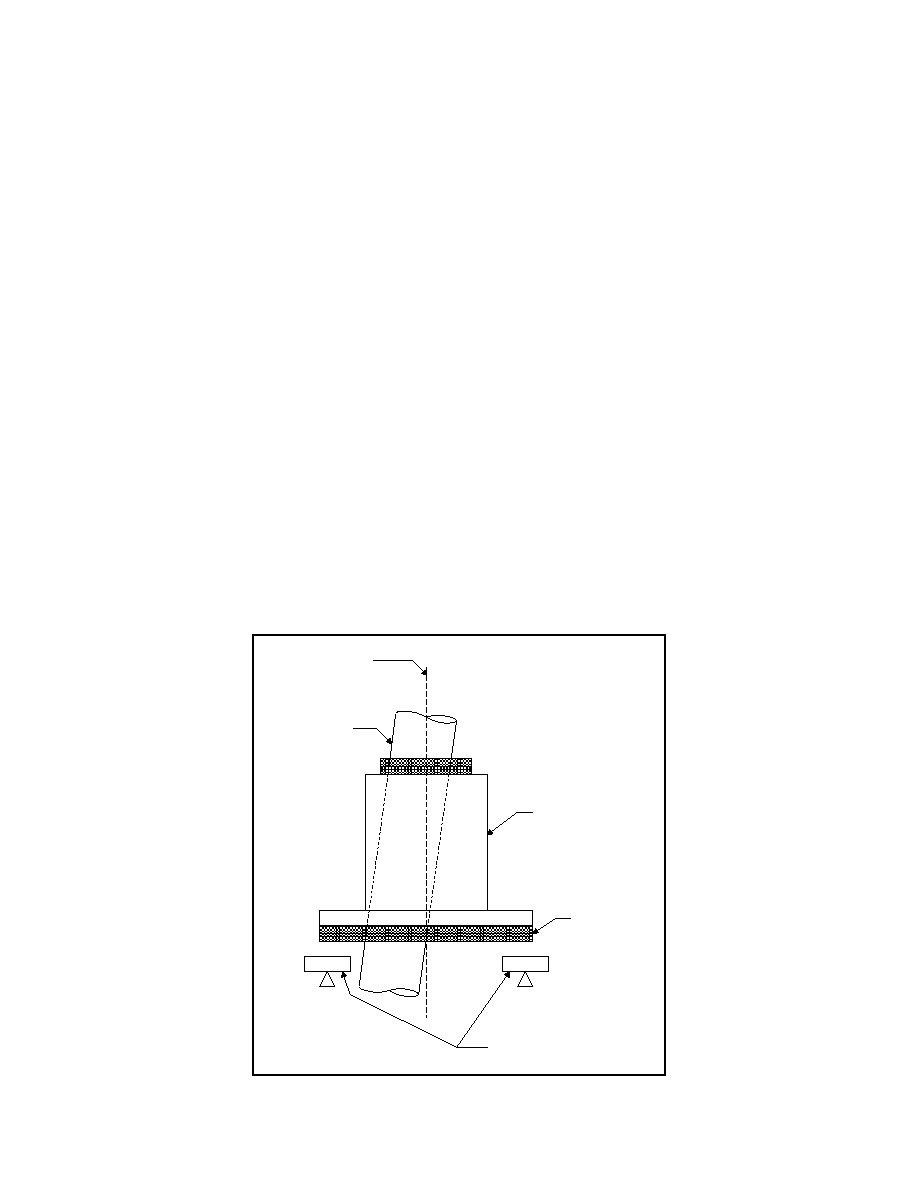

11
Plane of Thrust
Shoes Should
Be Level
Thrust Runner
Should Be
Perpendicular to
Shaft
Thrust Block
Shaft
Center of Runout will
be Plumb if Thrust
Shoes are Level
Figure 11.--Thrust bearing perpendicularity and level.
components to the wire. If the centers are not within tolerance for concentricity, the moveable
components, such as the bearing brackets or, in some cases, the generator stator, are moved into
concentricity with the non-movable components, such as the turbine seal rings, and redowelled.
components, such as the bearing brackets or, in some cases, the generator stator, are moved into
concentricity with the non-movable components, such as the turbine seal rings, and redowelled.
3.2 Circularity
Circularity refers to the deviation from a perfect circle of any circular part. On the generator
rotor or stator, the circularity is measured as a percent deviation of the diameter at any point from
the nominal or average. This is referred to as roundness and the deviation as out-of-roundness.
rotor or stator, the circularity is measured as a percent deviation of the diameter at any point from
the nominal or average. This is referred to as roundness and the deviation as out-of-roundness.
On bearings, seal rings, and similar components, circularity is usually referenced as the out-of-
roundness and is measured as the difference between the maximum and minimum diameter.
roundness and is measured as the difference between the maximum and minimum diameter.
3.3 Perpendicularity
Perpendicularity in the alignment of a vertical unit refers to the relation of the thrust runner to the
shaft or guide bearing journals (figure 11). If the bearing surface of the thrust runner is not
perpendicular to the shaft, the shaft will scribe a cone shape as it rotates. Figure 12 illustrates
this. The diameter of this cone measured at any elevation is referred to as the static runout at that
point. The perpendicularity of the thrust runner to the guide bearing journals is measured
indirectly by measuring the diameter of the static runout at the turbine guide bearing journal.
shaft or guide bearing journals (figure 11). If the bearing surface of the thrust runner is not
perpendicular to the shaft, the shaft will scribe a cone shape as it rotates. Figure 12 illustrates
this. The diameter of this cone measured at any elevation is referred to as the static runout at that
point. The perpendicularity of the thrust runner to the guide bearing journals is measured
indirectly by measuring the diameter of the static runout at the turbine guide bearing journal.